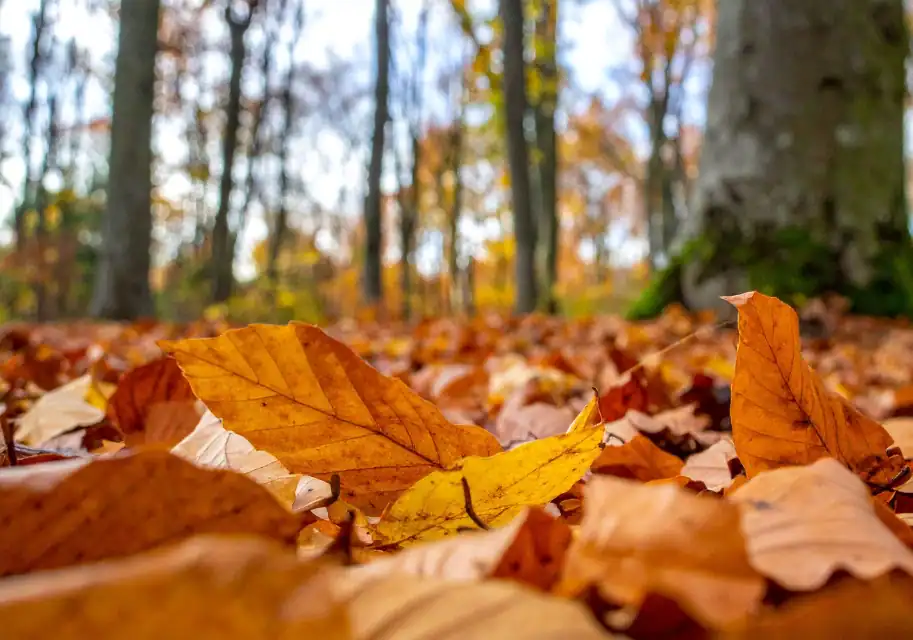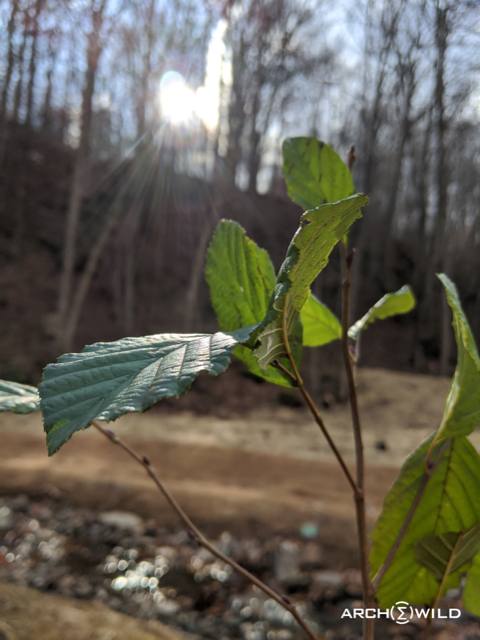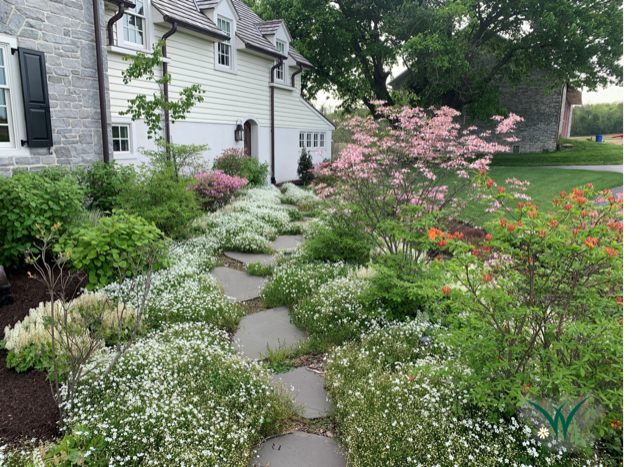What the heck do I do with all these leaves? (The questions everyone asks)
Estimated read time: 5 minutes
Maybe you’ve heard that leaving your leaves is better for nature, but you’re not sure why or where to start. You’re not alone. Most of us grew up believing that a tidy yard meant a clean sweep each fall. The truth is, there’s a better way to care for both your yard and the life that depends on it.
By the time leaves start to blanket the ground, many of us instinctively reach for the rake or blower. But those leaves aren’t just debris. They’re part of the foundation of life in your yard. Beneath every layer, countless creatures are tucked away for the winter.
When we clear them too quickly or too completely, we remove the shelter and nutrients that keep our local ecosystems thriving. Whether your leaves have just started dropping or your yard has been covered for weeks, it’s never too late to look at those leaves differently. Small changes in how you handle them can make a big difference for the life around you.
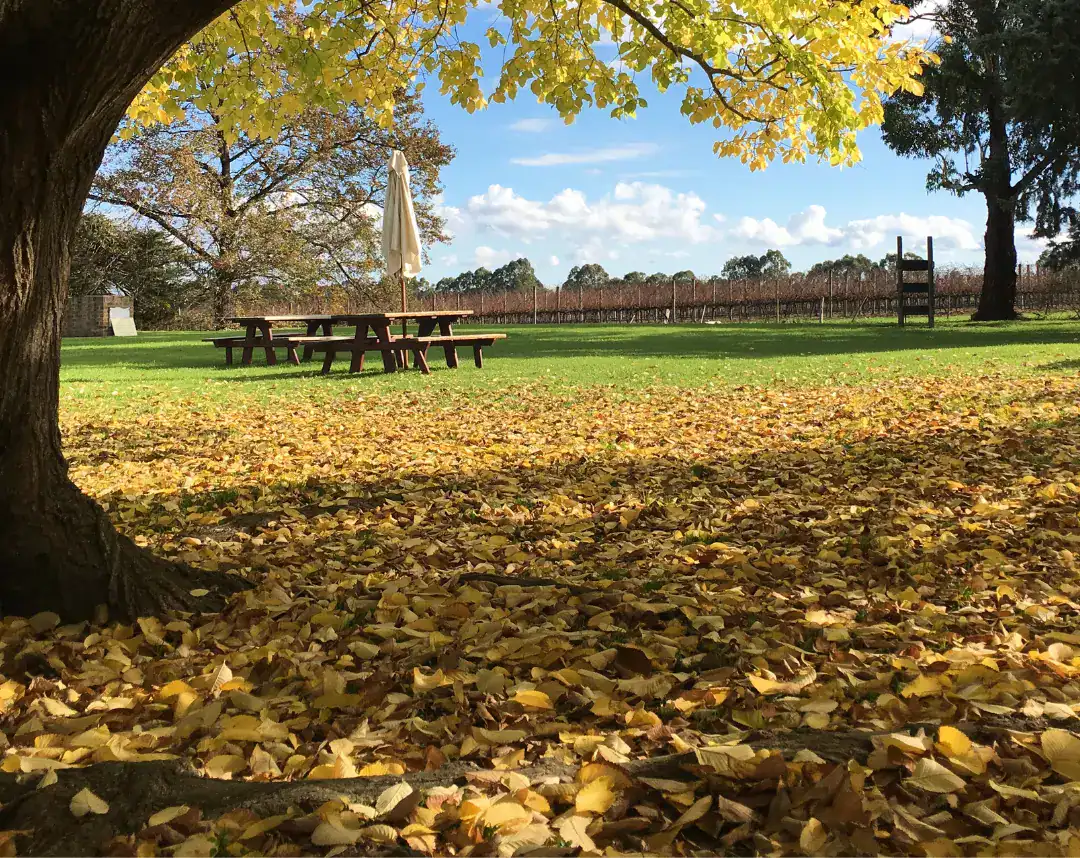
Leaving the leaves where they fall is the gold standard for supporting biodiversity.
Who really needs leaves?
If you want to see more nature in your yard—fireflies, butterflies, native bees, and more—then you’ll want to give them a place to live. Fallen leaves are one of the most important habitats in your yard.
- Bumblebees burrow into them.
- Butterfly and moth caterpillars cocoon inside them.
- Fireflies hide and lay eggs beneath them.
- Toads and salamanders tuck into the damp leaf layer for shelter and moisture.
- Songbirds like robins and thrushes forage through it for insects and larvae to eat.
Every fallen leaf helps keep your yard alive. It’s not just about insects. Those same leaves return nutrients to your soil and feed your trees, completing a natural cycle that modern cleanup often interrupts.
They’re not clutter; they’re home—to the nature we want to experience in our own backyards.
Why can’t I just bag them up? It looks so clean!
Those bags aren’t just full of leaves—they’re full of life. Fireflies, caterpillars, and countless other creatures get hauled away and sent to the landfill with everything else.
There are ways to make your yard look neat while keeping those lives intact. The real shift comes from how we see leaves:
They’re not clutter; they’re home to the very nature we want to experience in our own yards.
Will leaves hurt my lawn or trees?
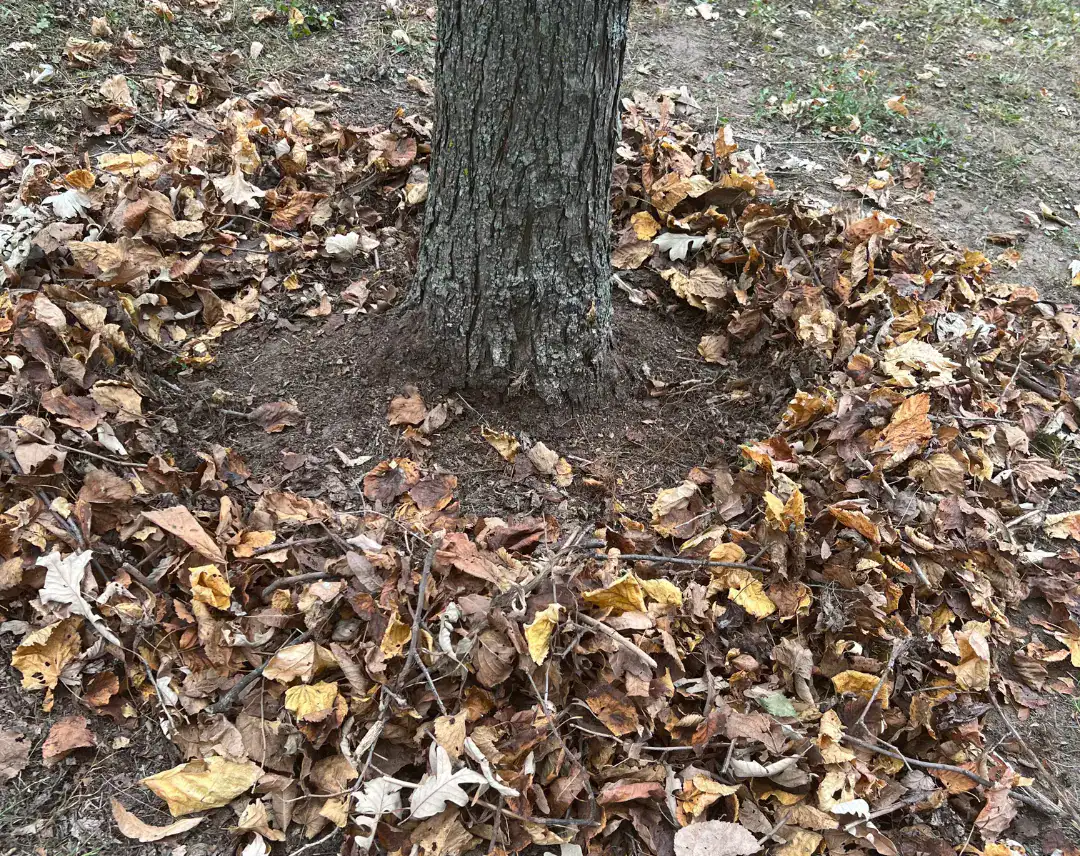
A ring of leaves (away from the trunk) starts a soft landing for insects.
Not if the layer is thin. A light covering actually protects soil and roots, helping to retain moisture and feed the microorganisms that keep your landscape healthy.
If your grass is completely buried, move the extra leaves into garden beds or under trees and shrubs. Avoid piling them directly against tree trunks, where constant moisture can lead to rot. Spread them a few inches away from the base instead, letting air and water circulate naturally.
Leaves placed beneath native trees are especially valuable. They help create soft landings, gentle areas of leaf cover and native plants that support caterpillars and other insects as they move between trees and the ground.
Nature will handle the rest. Native plants will have no problem growing through a layer of leaves in the spring. Over time, the leaves will break down, enrich your soil, and continue feeding the trees that dropped them.
The more of your leaves that stay on your property and undisturbed, the better for your soil and the wildlife that depends on it.
Should I shred my leaves?
Shredding can seem like a tidy compromise, but it destroys the insects living inside those leaves. If you must shred, do it in spring after the first few consistently warm weeks, once overwintering species have emerged.
Unshredded leaves provide better structure for wildlife and still break down beautifully over time.

A light layer of leaves in native beds gives wildlife a chance to use them through the season.
What if my neighbors or HOA think it looks messy?
Worried that leaving the leaves will look messy or draw complaints? You’re not alone. Most of us were taught that a cared-for yard means a clean sweep, but a few simple choices can keep your space both wildlife-friendly and visually intentional.
Start by keeping leaves where they do the most good—under trees, around shrubs, and in garden beds. These areas naturally blend leaf cover into the landscape while protecting soil and sheltering wildlife.
Cues for care make all the difference:
- Keep edges tidy along sidewalks, driveways, and paths. A clean border instantly reads as maintained.
- Avoid large loose piles in open areas or lawns; instead, spread or tuck them neatly into planting zones.
- Create clear borders with a mowed strip, edging, or stone line to signal intention.
- Add a sign telling neighbors that you're intentionally helping nature. It shifts perception from neglect to purpose and can even inspire curiosity and conversation.
- Mind public areas. Never rake or blow leaves into streets, gutters, or storm drains. Most cities prohibit it to protect water quality.
- Thin the layer on lawns if needed, leaving about an inch or two so grass still shows through while maintaining habitat beneath.
- Keep it contained and seasonal. During spring inspections or HOA review periods, move visible piles behind shrubs or into mulched beds.
If your neighborhood or HOA has strict appearance rules, these small visual cues go a long way. A yard can look intentional and beautiful while quietly doing the work of conservation.
If you remember nothing else: keep it neat at the edges, off the street, and close to your trees. That simple formula satisfies most codes and still protects the ecosystem right outside your door.
Best practices: from most to least helpful
The goal isn’t perfection—it’s progress. How you handle your leaves can make a big difference for the wildlife and soil that depend on them. The more of your leaves that stay on your property and undisturbed, the better for your soil and the wildlife that depends on it.
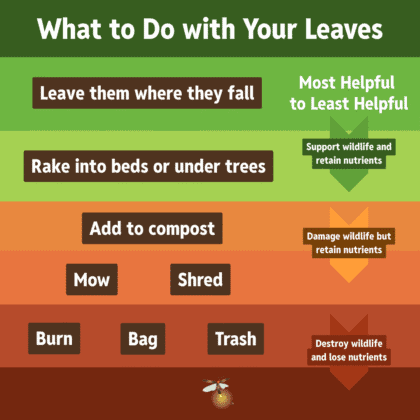
Leave them where they fall.
This is the gold standard for biodiversity. A natural layer of leaves provides the richest habitat for overwintering insects, toads, and salamanders, while protecting roots and feeding soil life.
Rake into beds or under trees
If you prefer a tidier look, simply move leaves into garden beds, beneath shrubs, or around trees. You’ll still protect much of the wildlife and recycle nutrients right where they belong.
Add to compost
Composting keeps nutrients on-site and enriches your soil, but shredded or turned leaves won’t protect insects already living inside them. It’s still a win for soil health, just less so for biodiversity.
Mow or shred
If you choose to mow or shred, know that while it helps nutrients return to the soil, it also destroys many of the insects that shelter within the leaves.
Bag, burn, or trash
Bagging or burning removes both nutrients and habitat. It’s the most harmful option for local ecosystems and the easiest one to replace with something better.
Even small shifts up this list matter. Each step closer to “leave them where they fall” gives nature more of what it needs to thrive right where you live.
A yard can look intentional and beautiful while quietly doing the work of conservation.
Together for biodiversity
The Leave the Leaves campaign was started by our friends at The Xerces Society for Invertebrate Conservation, who have long worked to protect and restore habitat for pollinators and other invertebrates
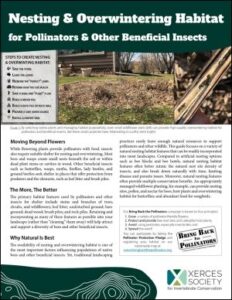 We’re proud to help spread their message through the Homegrown National Park community, and to join them in encouraging everyone to rethink fall cleanup and give nature the space it needs to thrive.
We’re proud to help spread their message through the Homegrown National Park community, and to join them in encouraging everyone to rethink fall cleanup and give nature the space it needs to thrive.
For more science-based guidance on how to help pollinators and beneficial insects through the seasons, download Xerces’ free publication Nesting & Overwintering Habitat.

